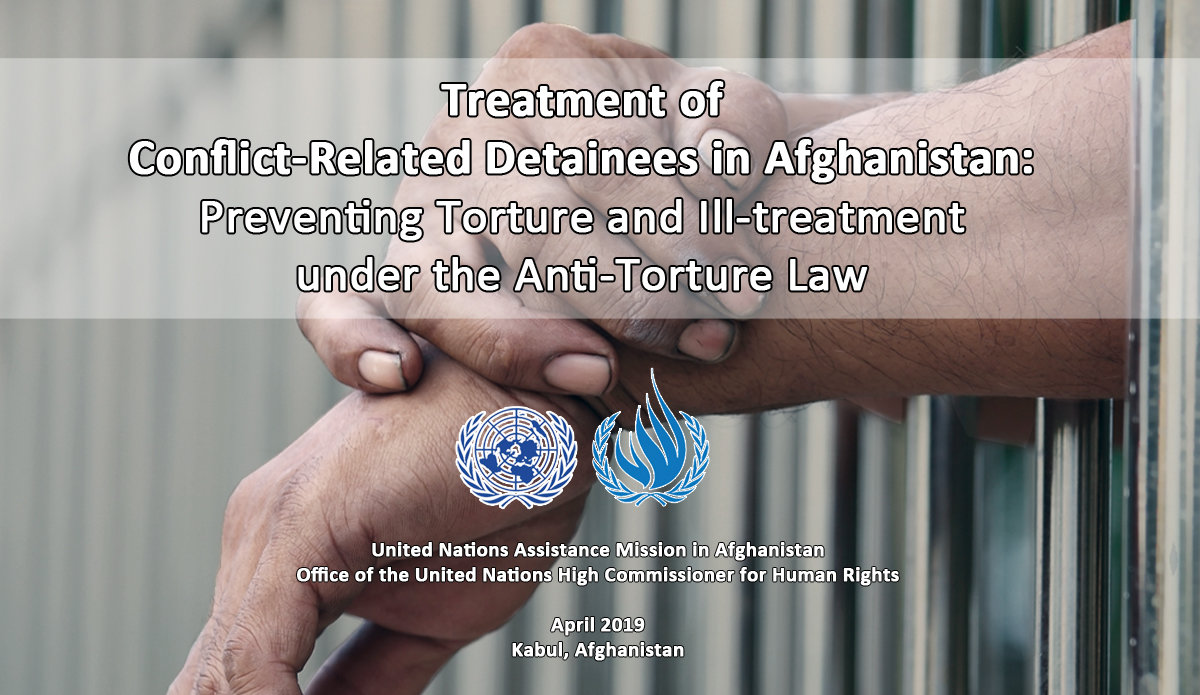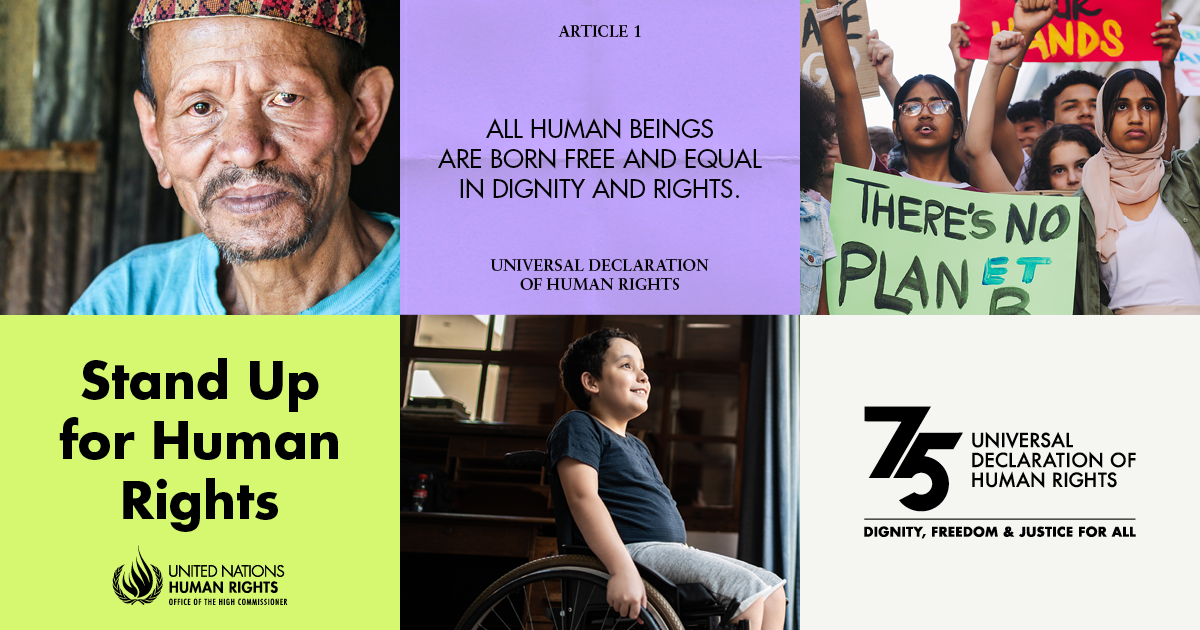Afghanistan: progress in torture eradication, but a long way to go
KABUL - In its latest report on the treatment of conflict-related detainees in Afghanistan published today, the UN documents an encouraging reduction in the number of cases of torture since 2016 but notes its ongoing concern at the high number of detainees who continue to report torture and ill-treatment.
The joint report by the UN Assistance Mission in Afghanistan (UNAMA) and the UN Human Rights Office, issued on the first anniversary of Afghanistan’s accession to the Convention Against Torture’s Optional Protocol, finds that nearly a third of conflict-related detainees interviewed provided credible and reliable accounts of having been subject to torture or ill-treatment. The report is based on interviews with 618 detainees held in 77 facilities in 28 provinces across the country between 1 January 2017 and 31 December 2018.
The report acknowledges progress made by the Government in implementing Afghanistan’s National Plan on the Elimination of Torture, and highlights that this enforcement has had tangible results, with a reduction in torture or ill-treatment of conflict-related detainees across different security entities in the country.
Overall, among those in the custody of the Afghan National Defence and Security Forces, 32 percent based of the sample of the detainees reported torture and ill-treatment, compared to 39 percent over the previous reporting period (1 January 2015 to 31 December 2016). Notably, the reduction was more marked in 2018. In particular, within facilities of the National Directorate of Security (NDS), the prevalence of torture and ill-treatment of those interviewed decreased from 29 per cent to 19 per cent in 2018. And among conflict-related detainees held by the Afghan National Police (ANP), the proportion of those who reported torture or ill-treatment fell from 45 per cent over the previous reporting period to 31 percent. Youngsters were at a higher risk of suffering mistreatment.
While the reduction in the number of cases is encouraging, the report notes that the “decline in use of torture or ill-treatment is not yet significant enough to indicate that the remedial measures taken are sufficient.” The most common form of torture and ill-treatment reported was beatings. The vast majority of detainees said they had been tortured or ill-treated to force them to confess and that the treatment stopped once they did so.
There are also major differences depending on the location of the detention facilities. While, on average, 31 percent of those ANP facilities reported torture or ill-treatment, the rate in the ANP facility in Kandahar was a very disturbing 77 per cent, including allegations of brutal forms of torture, such as suffocation, electric shocks, pulling of genitals and suspension from ceilings. Allegations of enforced disappearances in Kandahar also persisted during the reporting period.
While the report highlights significant improvements for the NDS facilities in Kandahar and Herat, the treatment of conflict-related detainees in some NDS facilities also remains of concern, particularly those located in Kabul, Khost and Samangan provinces, as well as by the NDS counter-terrorism department. The report also highlights instances of unlawful and arbitrary detention, including following mass arrests, by NDS Special Forces and the Khost Protection Force.
The report further raises concern about poor conditions of detention observed within the Afghan National Army-run Detention Facility in Parwan, including overcrowding, inadequate lighting, the use of solitary confinement as the sole disciplinary measure and restrictions on family visits and access to lawyers.
“We welcome the steps taken by the Government to prevent and investigate cases of torture and ill-treatment over the past two years. However, as our report illustrates, there is still a long way to go to eradicate this horrendous practice among conflict-related detainees,” said Tadamichi Yamamoto, the Secretary-General’s Special Representative for Afghanistan. “Respect for the rule of law and human rights is the best way to create the conditions for sustainable peace.”
The report emphasizes violations and challenges in other areas, among them, legal limitations on the right of conflict-related detainees to judicial oversight; lack of implementation of key procedural and other legal safeguards to prevent torture (medical screening, access to lawyers, etc.); continued absence of accountability for perpetrators, with very limited referrals to prosecution; and lack of any meaningful possibility of obtaining an effective judicial or administrative remedy.
UN High Commissioner for Human Rights Michelle Bachelet said the report’s findings demonstrate that the policies put in place to combat torture and ill-treatment were having effect – but they were far from sufficient.
“A year ago, on this day, the Government of Afghanistan committed itself to the prevention of torture by acceding to the Optional Protocol to the Convention against Torture,” Bachelet said.
“I urge the Government to work swiftly to create a National Preventive Mechanism to ensure independent, impartial scrutiny of the treatment of detainees. A well-resourced watchdog of this sort, which is able to make unannounced visits to places of detention and raise awareness of what constitutes torture and ill-treatment according to international human rights law, can go a long way towards the ultimate goal of fully eradicating torture.”
The status and treatment of conflict-related detainees held by Anti-Government Elements is not covered by the report.
* * *
The full report, “Treatment of Conflict-Related Detainees in Afghanistan: Preventing Torture and Ill-treatment under the Anti-Torture Law” is available at:
https://unama.unmissions.org/treatment-conflict-related-detainees-afghan-custody
 UN
UN







